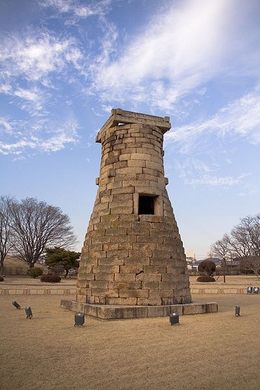12 Ancient Scientific Instruments You Can Still See Today
"Numbers are important at Cheomseongdae, the oldest astronomical observatory in East Asia. Though the observatory’s age (it dates back to the 7th century Silla Kingdom of modern-day South Korea) can serve to obscure the original purposes of its design, some have claimed there is numerical significance imbued within every brick. Cheomseongdae, which roughly translates to “star-gazing tower,” is a cylindrical structure composed of 362 granite blocks, which some claim represents the 362 days of the lunar year. In total, there are 27 circular layers of stones, a number believed to reference the 27th ruler of the Silla Kingdom, Queen Seondeok, during whose reign the observatory was built. This numbers game continues further, as a window is placed strategically with 12 layers of stones above and 12 layers below, symbolizing the months of the year or the signs of the Zodiac. And if that weren’t enough symbolism for one small building, the four-sided base is also thought to represent the seasons. But regardless of the hidden numerical messages, the observatory is interesting in its own right. As one of the oldest scientific sites in the world, Cheomseongdae provides a window into how astronomy was conducted many hundreds of years ago. In those times, the line between astronomy and astrology was considerably blurred, and “astronomers” often reported their findings to the king’s court so that various decisions of governance could be made based on celestial activities. Despite its use for astrological predictions, Cheomseongdae was also the site of more traditional astronomical research. From the top of the tower, state-appointed astronomers made continuous observations 24 hours a day, 365 days a year, developing the ability to predict eclipses and chart the trajectories of comets. In fact, Cheomseongdae’s importance, in both the histories of Korea and astronomy, earned it the distinction of national treasure in 1962 and its image can even be found on Korean coins." - ATLAS_OBSCURA






